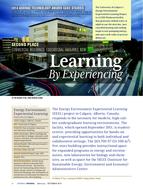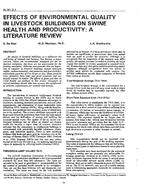A variable-speed integrated heat pump/water-heating appliance was monitored for two years while meeting the space-conditioning and water-heating needs of an occupied residence. Experimental results are presented that show the total energy consumed by the residence was significantly reduced compared to previous years in which electric baseboard heat, a wood stove, and window air conditioners were used. During the two space-heating seasons, the variable-speed integrated heat pump/water-heating appliance used 60% less energy than would have been consumed by an electric furnace with the same air distribution system and a storage-type electric water heater. The monthly space-cooling-only coefficients of performance (COP) ranged from 2.50 to 4.03, whereas the monthly space-heating-only coefficients of performance ranged from a low of 0.91 to a high of 3.33. A proposed index to quantify the overall system performance of integrated water-heating/space-conditioning appliances, referred to as the combined performance factors, ranged from 1.55 to 3.50. The majority of larger values occurred during months in which space cooling dominated. The combined performance factor for the entire two year study was 2.45. A conventional watt-hour meter supplied by the local electrical utility and an electronic digital power analyser were used to measure the energy consumption of the variable-speed heat pump to discern if variable-speed equipment induces errors in conventional utility metering equipment. Measurements made using the two instruments were in excellent agreement. The monthly energy consumption and peak electrical demands of the residence, integrated heat pump/water-heating appliances, supplemental space heater, and water heater are discussed. The influence of outdoor temperature on electrical power demand is presented.
KEYWORDS: year 1995, monitoring, variable speed motors, heat pumps, water heating, water heaters, accuracy, meters, comparing, electricity consumption, energy consumption, air conditioning, heat load, coefficient of performance
Citation: ASHRAE Trans. 1995, Vol.101, Part 2, Paper number 3888, 101-115, 10 figs., 3 tabs., 7 refs.
Product Details
- Published:
- 1995
- File Size:
- 1 file , 1.9 MB
- Product Code(s):
- D-16879


